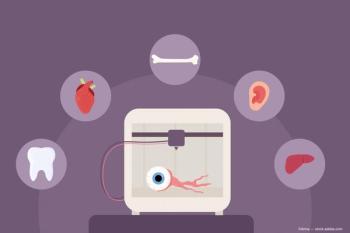
- Ophthalmology Times: July 15, 2020
- Volume 45
- Issue 12
Teaching AI algorithms to identify corneal pathology: The future is now
Emerging technology may be able to fill existing imaging diagnostic gaps
This article was reviewed by Andrés A. Bustamante, MD
Imaging technology has been advancing at a rapid-fire rate of late, but the advancements have not yet reached the level of sophistication that allows the various instruments to detect corneal pathologies before they become symptomatic and permits their measurement.
This may be the point at which artificial intelligence (AI) enters the picture to fill the existing diagnostic gaps.
Related:
“Standardized quantitative measurement of different corneal structural alterations, that is, stromal edema, inflammatory infiltration, fibrosis, and scarring are crucial for early detection, objective documentation, grading, and disease progression,” said Andrés A. Bustamante, MD.
AI, he explained, has an unlimited capacity to learn and analyze large volumes of data. It can also autocorrect and continue learning to improve sensitivity and specificity as a tool to diagnose and measure disease progression.
AI has already been called into action in
In corneal ectasia, he pointed out, only the topographic parameters and the tomographic thickness measurements have been analyzed.
Bustamante is a
Related:
Pilot study
Bustamante and colleagues conducted a study with the goal of training different AI algorithms to discriminate between healthy and diseased corneas by evaluating spectral-domain
Their prospective, experimental, comparative pilot study included a control group comprised of 71 images of healthy corneas and an experimental group comprised of 22 SD-
Bustamante explained that in image processing and the intersection with machine learning, extraction of features is crucial in pattern recognition.
Related:
This process starts by calculating the state of the measured data from images that were intended to be informative and not redundant, which facilitates machine learning tasks.
When imaging processing was complete, the investigators input the information into the different machine learning algorithms, namely, random forest (supervised learning), support vector machines (supervised learning), convolutional neural network (unsupervised learning), and transfer learning, which is associated with random forest.
The measure of accuracy was the area under the curve (AUC).
Analysis indicated that all 4 methods—random forest, convolutional neural network, transfer learning-support vector machines, and transfer learning-random forest—achieved high levels of sensitivity, specificity, and accuracy.
However, transfer learning-random forest showed the highest sensitivity and specificity, 1 and 1, respectively, with 100% accuracy in classifying normal and pathological images.
Transfer learning-support vector machines had the next highest levels of sensitivity, specificity, and accuracy, at 1%, 0.8571%, and 96.43%, respectively, Bustamante reported.
Related:
Bustamante explained further that although the transfer learning approach seemed the best method, the convolutional neural network model may be attributed to the limited dataset on which it was trained.
The convolutional neural network is a strong predictor, but an extensive training dataset must be available and in medicine that is not always possible.
“AI is an emerging technology in medicine that facilitates early detection, diagnostic accuracy, objective evaluation of disease progression, and detailed follow-up of therapeutic results of certain ophthalmic disorders, particularly those most related to images of specific ocular structures,” Bustamente explained. “AI is a powerful took that will increase the diagnostic sensitivity and specificity of ophthalmic pathology. We believe that this technology can help us objectively measure disease progression and even in the preclinical diagnosis of certain pathologies.”
--
Andrés A. Bustamante, MD
e:[email protected]
Dr Bustamante has no financial disclosures related to this report.
Articles in this issue
over 5 years ago
Toric stability: A minor change with a major impact for patientsover 5 years ago
Diagnosing a 'down looker'over 5 years ago
Dropless, hands-free regimen key for patientsover 5 years ago
Gene therapy offers hope for choroideremiaover 5 years ago
Machine-learning algorithms could help predict course of NPDRover 5 years ago
Thyroid eye disease: Not limited to visual impairmentover 5 years ago
Beating burnout with camaraderieNewsletter
Don’t miss out—get Ophthalmology Times updates on the latest clinical advancements and expert interviews, straight to your inbox.













































.png)


